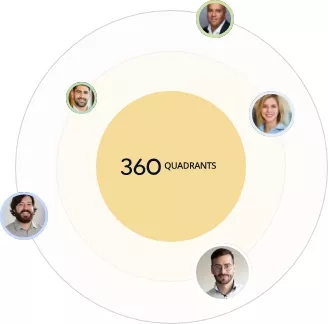What is IoT Analytics Software
IoT is a combination of technologies, software and services, tools, policies, platforms, guidelines approaches, and a set of professional services. IoT Analytics software and solutions are defined and judged by their capabilities to reduce the overall operational time, cost, and required expertise, to develop analytics-rich AoT applications. The solutions are primarily responsible for collecting, integrating, cleansing, and filtering data from Internet of Things (IoT) sensors and devices. The solutions then apply model-based and data-driven prediction analytics, as well as, optimization and simulation on the collected data, to generate useful information.360Quadrants recognizes the below-listed companies as the best IoT Analytics Software -
Top 10 IoT Analytics Software in 2020:
- IBM
- MICROSOFT
- SAP
- ORACLE
- CISCO
- DELL
- HITACHI
- HPE
- PTC INC
The IoT Analytics software market is expected to grow from USD 7.19 Billion in 2017 to USD 27.78 Billion by 2022, at a Compound Annual Growth Rate (CAGR) of 31.0%. Factors such as the tremendous growth of IoT data and the need for advanced analytics and automation of businesses are driving the global market. In the component segment, the IoT Analytics software segment is expected to have the larger market share during the forecast period. The demand for IoT Analytics is rising as organizations are looking for solutions to generate business-related insights and plan the next steps accordingly based on the insights gathered. Vendors provide software and solutions that assist companies with data collection and data analysis for generating meaningful insights. IoT Analytics software solutions filters the aggregated and enriched data so that it can be analyzed to provide a high throughput from multiple live input data sources. Among applications, the predictive maintenance and asset management application is expected to continue its dominance during the forecast period. Asset management integrated platforms assist users in managing physical assets and tracking equipment performance. The platforms also provide service assurance by enabling real-time alerts and providing automated corrective actions. The cloud deployment model is expected to exhibit a higher adoption compared to the on-premises deployment model. Cloud-based solutions are gaining a firm hold on the market, due to growing demands for improved service and cost-effectiveness, and the increasing needs of organizations to keep track of operational processes for maintaining productivity. The manufacturing industry vertical is expected to have the largest market share and lead the market during the forecast period. IoT Analytics can be exploited by manufacturers to create smarter products; connect and integrate with customers; streamline innovations, planning, and pre-manufacturing processes; and improve post-manufacturing support and services.
The vendors have been placed into 4 categories, based on their performance in each criterion: “visionary leaders,” “innovators,” “emerging companies,” and “dynamic differentiators.” The top 25 players have been evaluated in this section of the report. The analysis has been carried out based on specific parameters and scores have been assigned accordingly.
Vendors who fall into this section receive high scores for most of the evaluation criterion. The vendors in this section have a strong and established product portfolio, and a very strong market presence. They provide mature and reputable AoT software and services that cater to a wide range of verticals, globally. They also have strong business strategies. The companies falling in this category include IBM, Microsoft, Oracle, SAP, Cisco Systems, Dell Technologies and Google.
The vendors included in the dynamic differentiators section have the potential to broaden their product portfolio to compete with other key market players. The companies falling in this category include HPE, Amazon Web Services and General Electric.
The companies falling in the innovators section include PTC, Hitachi, Teradata, Glassbeam, AGT International, Software AG, TIBCO Software, Striim, Ericsson, and Vitria Technology. These players have a strong product portfolio and robust business strategy to achieve continued growth. These players have innovative products and potential to build strong strategies for their business growth to be at par with the visionary leaders.
Emerging companies in the AoT market include Greenwave Systems, Splunk, Salesforce.com, Information Builders, mnubo and RapidMiner. These players have the potential to build a strong product portfolio and business strategy to compete in the market with the visionary leaders and innovators.



